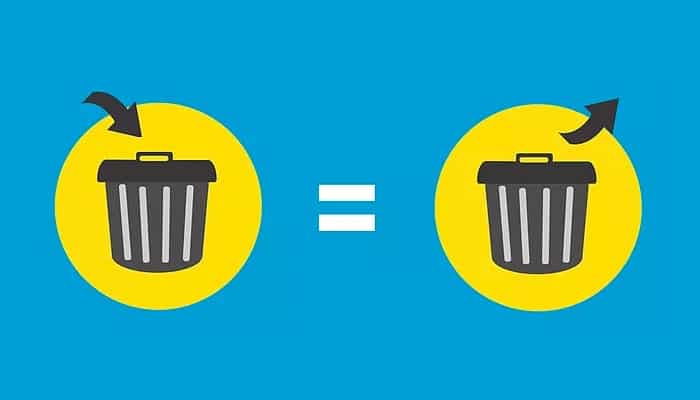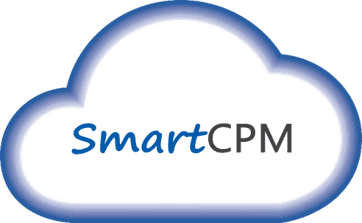Linking Consolidations and Account Reconciliations: Avoiding Garbage In, Garbage Out

When I worked in Finance in GL Accounting, or in FP&A, the mantra of “garbage in, garbage out” was what I lived by. As much as I hate to admit it, sometimes I was to blame for it. I’m sure there are much better accountants in the world than I ever was, or ever will be. But among the 280 or so finance organizations I have visited over the years working for Hyperion, Trintech, Prevero, or now OneStream – presenting account reconciliation software solutions for finance, this is by far the most common expression I have heard.
Finance departments tend to work in silos with specializations in their functions (e.g. Accounting, FP&A, Tax, Audit), defining certain levels of quality between them. Those definitions are often based on accounting principles, but they are also based on a realistic underlying cost of data quality. I have yet to meet a large organization with 100% accuracy in their accounting and finance functions. What I have seen is that they all have limited resources and budget and must settle on a sufficient level of accuracy for their function.
Missing a Critical Handoff
There is a particular space in accounting that surprisingly has not received a lot of attention from software vendors – that’s the hand-over after the GL close to the consolidation team. In almost every organization, the consolidation team will be focused on collecting and loading GL trial balances into a consolidation tool, proceed with the intercompany (IC) eliminations, make some top line adjustments, then move into financial reporting.
In parallel, the GL accounting team will run through the accounts and execute a series of control points and reconciliations to flush out errors, and mis-postings to the GL that will be corrected in the next period.
I have seen some large organizations that consolidate their accounts only once a year simply because they are privately held, and their organization structure is simple. Equally, I have seen some who only reconciled their accounts once a quarter, some even once a year. Needless to say, if they were talking to me about a software evaluation, it is because their auditors had recommended they upgrade their process and system. Generally, the details of those conversations were a bit hush hush.
But it goes to show how much these two activities do not necessarily fully align, which is strange because they serve at least one common objective: trying to reflect through financial numbers the actual position of the organization. You would expect a very tight collaboration and a software solution to facilitate this work.
To avoid the “garbage out” issue, the consolidation team needs accurate numbers from the GL team, yet the control provided by the reconciliations process happens after the fact. This doesn’t make a lot of sense, but organizations face the issue that the amount of work required to perform those controls far exceeds the time given to the consolidation team to produce their numbers. So everyone lives with the inaccuracy.
Fragmented Software Solutions Not Helping
The way most financial software vendors have dealt with this critical handoff has been was to provide a solution to structure the consolidation process and a separate software package to address the account reconciliations. Before OneStream, no vendor had linked the two. Hyperion is supposedly capable of doing so, but the applications are totally fragmented. You can do your consolidation in Hyperion Financial Management (HFM), but there is no link with Hyperion Account Reconciliations Manager (ARM). They are two completely distinct software products.
The Hyperion Financial Close Management solution (FCM) is dislocated both from HFM and ARM with no automated mechanism to reopen a task. It is the same as using an Excel spreadsheet, just online. With Oracle going full cloud, this is just going to get worse.
Other vendors such as Blackline and Trintech are falling behind on two counts:  they do not have a consolidation engine and their task management modules are segregated from the rest of the financial processes. In other words, you can see what the tasks are, but they do not necessarily reflect what has happened (e.g., this task has not been marked as completed by a team member, but it may simply be that he did not tick it, has the interface been loaded in the consolidation engine? Are there any material items the consolidation team should be made aware of?). This is all happening outside the tool.
they do not have a consolidation engine and their task management modules are segregated from the rest of the financial processes. In other words, you can see what the tasks are, but they do not necessarily reflect what has happened (e.g., this task has not been marked as completed by a team member, but it may simply be that he did not tick it, has the interface been loaded in the consolidation engine? Are there any material items the consolidation team should be made aware of?). This is all happening outside the tool.
Unless you master both the consolidation and the reconciliation processes, you cannot deliver an air tight solution. Additionally, neither Trintech nor Blackline have an ETL tool that will allow users to drill back to the source data. They both work from flat files loaded in and out of the system. Without mastering the data integration process, you cannot guarantee that what you are giving to the Account Reconciliations team ties up with the information you gave to the consolidation team – there will be timing differences for sure. Of course, you can do some additional reconciliations, but that is clearly a workaround.
More importantly, this begs the question – what is the added-value of human intervention? Essentially doing a recon process is the activity to flush out the exceptions as quickly as possible, ideally correcting them ahead of the close – worst case, reporting on the materiality they represent. It is about shifting from an “Excel-cover-sheet” process to a risk rating approach. You want to reduce costs by automating the easy pieces of work and bringing forward, in a controlled and effective way, any potential or real risks to the Balance Sheet or the Income Statement. It is about gaining that confidence when you present the results to your CFO or CEO that you know what is right, and the materiality of any issues. It is about being in control to a higher degree.
 The issue with this critical handoff is further exposed when an organization is trying to improve their productivity by creating a Shared Services Center (SSC) or outsourcing their financial processes. If you do not have an efficient mechanism to monitor the activities, ensure their execution, and support the fact that some tasks may have to be done more than once both on the GL account reconciliations and the Consolidation processes, how are you possibly able to guarantee the integrity of the numbers coming from people located far away from you? People who have little experience doing those reconciliations and who do not necessarily understand your business?
The issue with this critical handoff is further exposed when an organization is trying to improve their productivity by creating a Shared Services Center (SSC) or outsourcing their financial processes. If you do not have an efficient mechanism to monitor the activities, ensure their execution, and support the fact that some tasks may have to be done more than once both on the GL account reconciliations and the Consolidation processes, how are you possibly able to guarantee the integrity of the numbers coming from people located far away from you? People who have little experience doing those reconciliations and who do not necessarily understand your business?
Traditional Software Vendors Falling Behind
If the functionality issues are not enough to convince you, the commercial model should. Owning a consolidation engine like HFM, IDL, LucaNet, Sigma conso (OEM product of Prevero), or Cognos Controller is simply not a good value proposition. Most of those solutions have had no significant new features added in many years. Some like Cognos Controller or HFM in over a decade.
On the GL Reconciliation side, the core functionality of solutions such as Trintech and Blackline have changed little since the time I worked for Trintech with AssureNET in 2006. Sure, they added a couple of neat tricks but the cost savings are achieved mostly on the core features.
Yet, those vendors would have you duplicate your IT infrastructure with 2 servers and require users to learn 2 interfaces. You would also have to buy multiple modules and live with 2 completely distinct task management modules and 2 interfaces for reporting. This costs a lot of money with little incremental benefits. This is true for all software vendors, except OneStream.
The basic question you need to ask yourself is: “Why would I put myself through this, when I can avoid it?” If you want to reduce the garbage out, there is only one way forward – simplify your business processes, unify systems, simplify your IT landscape and increase financial data quality with OneStream.
OneStream Unifies Financial Consolidation, Reporting and Account Reconciliations
OneStream Software provides a revolutionary CPM 2.0 solution, the OneStream XF SmartCPMTM platform (XF stands for Extensible Finance). OneStream XF unifies and simplifies financial consolidation, planning, reporting, analytics and financial data quality for sophisticated organizations.
Deployed via the cloud or on-premise, OneStream is the first and only solution that delivers corporate standards and controls, with the flexibility for business units to report and plan at additional levels of detail without impacting corporate standards – all through a single application. We call this unique capability Extensible Dimensionality®.
The hallmark of a SmartCPM platform is the capability of having multiple solutions for  actuals, budgets, forecasts, plans, reconciliations, profitability analysis and more – all living together in a single application. Each solution benefits from leveraging all that the platform offers. OneStream XF eliminates risky integrations, validations, and reconciliations between multiple products, applications and modules.
actuals, budgets, forecasts, plans, reconciliations, profitability analysis and more – all living together in a single application. Each solution benefits from leveraging all that the platform offers. OneStream XF eliminates risky integrations, validations, and reconciliations between multiple products, applications and modules.
To learn more, watch the replay of a recent webinar on OneStream Account Reconciliations.
Nicolas Courtial of OneStream is a finance professional with 20 years of experience working in finance and IT for major corporations in Europe and Australia. His background is in accounting for Cisco Systems and the SSC of NCR as well as FP&A Manager for AstraZeneca in the Netherlands. For the last 10 years he worked at Trintech, Hyperion and Prevero, supporting organizations in automating their financial processes.
Get Started With a Personal Demo



OneStream Software LLC needs the contact information you provide to us to contact you about our products and services. You may unsubscribe from these communications at anytime. For information on how to unsubscribe, as well as our privacy practices and commitment to protecting your privacy, check out our Privacy Policy.